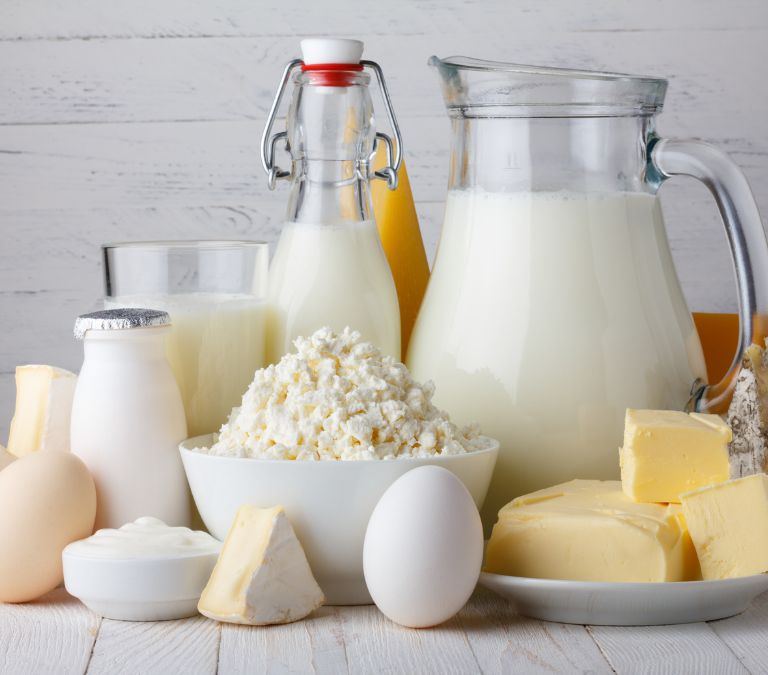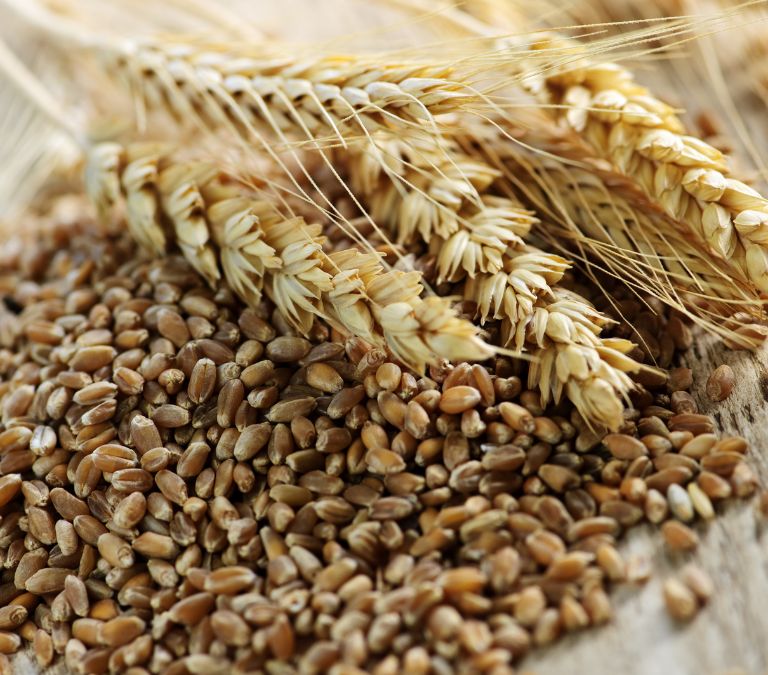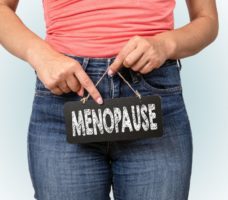You might find it more difficult to maintain your normal weight as you age. This is something to keep in mind. The menopause transition is associated with weight increase for many women.
Gaining weight during menopause is common, but it’s not unavoidable. You can turn things around by changing your lifestyle by adopting more nutritious eating practices and engaging in more physical activity.
After menopause, women in developed countries typically live an additional one-third, or around 30 years, of their lives. Two-thirds of women over 40 in these countries are already overweight or obese by the time they reach that age.
Many women note that they begin to gain weight when they enter menopause or are very close to it. In a survey, postmenopausal women in Europe were asked about the influence of various hormonal events on their weight.
Fifty percent of these women reported an increase in weight of at least 4.5 kilograms at the time of menopause, while only four percent mentioned a decrease of the same order. The magnitude of menopause-related weight gain and its very existence is still the subject of much debate.
Both women and men see a rise in total body weight as they age. This is seen in thin people, normal weight, and overweight subjects. It is not known for certain whether or not the onset of menopause has an effect on the rate at which a person gains weight.
What Research Has Shown
Oestrogen insufficiency, created in rats by having their ovaries removed, led to moderately excessive weight gain, according to a study that Ainslie and colleagues carried out. This happened through a combination of transient hyperphagia that did not persist despite continuing estrogen deficiency and a significant reduction in spontaneous activity (fidgeting) that continued while there was estrogen deficiency but was corrected by replacing estrogen in the diet. The cause was a combination of transient hyperphagia that did not persist despite continuing estrogen deficiency in the diet.
These findings were subsequently validated in human subjects by Lovejoy et al.3, who researched a sample population consisting of 103 Caucasian and 53 premenopausal African-American women. Menopause is the absence of menstruation for 12 consecutive months and increased follicle-stimulating hormone levels (F.S.H.). Lovejoy et al. used dual-energy X-ray absorptiometry (DEXA) to measure fat and lean mass. They also used computed tomography (C.T.) to measure visceral adipose tissue (V.A.T.) and subcutaneous adipose tissue (S.A.T.), as well as dietary intake and serum sex hormones.
Lovejoy et al. mapped out the transitional changes in a woman’s body throughout the seven years leading up to menopause. Three years before menopause, oestradiol levels began to drop, and this fall accelerated when amenorrhea set in. As anticipated, a rise in F.S.H. was produced directly from the decrease in oestradiol.
According to the DEXA scan results, there was a little rise in both total body weight and total body fat percentage. However, the increase in V.A.T. and fat in the middle abdomen was more noticeable. Although Lovejoy et al. could not find a temporary increase in calorie intake, they did observe a dramatic drop in spontaneous activity that, similar to what they found in rats, persisted over time.
What is Obesity?
The body mass index, also known as B.M.I., is a formula that measures a person’s body size by considering both their weight and height.
According to the C.D.C.P., having a body mass index (B.M.I.) of 30.0 or higher is the defining factor for obesity in adults.
There is a correlation between obesity and an increased risk for major diseases, such as diabetes type 2, cardiovascular disease, and cancer.
Obesity is a widespread problem. In 2017 and 2018, the Centers for Disease Control and Prevention (C.D.C.) estimated that 42.4% of adults in the United States were obese.
But the B.M.I. isn’t the only factor. As a metric, it suffers from a few shortcomings.
The Centers for Disease Control and Prevention (C.D.C.P.) cites that “the link between body mass index and body fat can be influenced by factors such as age, sex, ethnicity, and muscle mass.” The B.M.I. does not differentiate between excessive fat, muscle mass, or bone mass; it does not indicate fat distribution among individuals.
Despite these drawbacks, B.M.I. remains one of the most popular methods for determining a person’s overall body size.
What factors contribute to obesity?
Obesity is a condition that can develop over time if a person consumes more calories than they burn through regular activities and exercise. When added over time, these additional calories might lead to a rise in body weight.
However, the number of calories consumed vs. the number of calories burned or leading a sedentary lifestyle are not the only factors to consider. Even though these are causes of obesity, other causes are beyond your control.
The following are some specific causes of obesity:
-
Genetics might influence how your body converts the food you eat into energy and how fat is stored in your body.
-
Advancing in age can cause a loss of muscle mass and a slowing of the metabolic rate, making it simpler to put on weight.
-
Insufficient sleep can lead to hormonal changes that make you feel hungry and increase your desire for particular high-calorie foods.
-
Pregnancy, because the weight gained during pregnancy may be difficult to shed and lead to obesity.
Other medical disorders might increase weight, which can eventually lead to obesity. These are the following:
-
Polycystic ovarian syndrome (PCOS) is a disorder that affects female reproductive hormones and causes an imbalance.
-
Prader-Willi syndrome is an extremely uncommon illness present at birth and results in extreme hunger.
-
Cushing syndrome is a condition brought on by excessive levels of the hormone cortisol (associated with stress) in your system.
-
Hypothyroidism, often known as “underactive thyroid,” is a disorder in which the thyroid gland does not produce sufficient amounts of several crucial hormones.
-
Osteoarthritis (O.A.O.A.) and other painful disorders that may result in decreased activity
Dangers of Obesity after Menopause?
Gaining weight during menopause might have significant negative effects on one’s health. Having excess weight, particularly in the abdominal region, raises your risk of a variety of health problems, including the following:
-
Difficulties with breathing
-
Diseases of the heart and blood vessels
-
Type 2 diabetes
Several malignancies, including breast, colon, and endometrial cancers, are among those that are made more likely when a person carries excess weight.
Obesity Increases the Risk of Heart Failure Linked to Late Menopause
Obesity has long been associated with several health issues, such as type 2 diabetes, heart disease, and an elevated risk of premature mortality. According to a recent study, women who experience menopause later than typical may also be more likely to develop heart failure due to obesity.
When a woman stops menstruation, a process known as menopause begins, typically between the ages of 45 and 55. Heart failure, which is identified when the heart can no longer adequately pump enough oxygen-rich blood out to the rest of the body, has previously been related to earlier menopause and an increased risk of the condition.
According to the American Heart Association, a woman’s body generates less estrogen and progesterone after menopause, raising the risk of cardiovascular illnesses, including heart failure (A.H.A.).
Researchers examined data on 4,441 women who, on average, were 64 years old and through menopause at the age of 47 for the current study. When they enrolled in the trial, none of them experienced heart failure. Total heart failure occurred in 903 women throughout a follow-up of 16.5 years, which is the average.
The women were overweight by the conclusion of the follow-up period, with an average body mass index (B.M.I.) of 28.8. According to the U.S.U.S. Center for Disease Control and Prevention, a B.M.I. of 18.5 to 24.9 for adults is considered healthy, and a B.M.I. of 25 to 29.9 is overweight. A person with a B.M.I. of 30 and above is considered obese (C.D.C.).
Obesity and Respiratory Diseases
One of the most significant contributors to several persistent diseases and conditions, including coronary heart disease, diabetes, liver disease, and certain malignancies, obesity is one of the most common causes of these conditions. The body mass index (B.M.I.) must be greater than 30 kg/m2 to be considered obese.
According to some estimates, more than 1.6 billion adults worldwide are overweight; of those, approximately 300 million are obese. By 2015, the World Health Organization predicts that 10 percent of the world’s population will be overweight due to obesity.
Over the last 20 years, the number of obese people has increased by three in Europe, while in the United States, close to one-third of the population is either fat or overweight. In the United Kingdom, obesity contributes to 30,000 deaths per year and £3.5 billion (U.S.U.S. $5.4 billion) in healthcare costs. In the United States of America, the annual healthcare costs of an obese person are 36% higher than those of a person of normal weight.
Fat accumulation around the abdomen further contributes to a decline in lung function and an intensification of respiratory symptoms. Lower body fat deposition is related to fewer respiratory symptoms than higher body fat deposition.
It is theorized that the accumulation of fatty tissue in the abdomen wall and surrounding the abdominal organs impedes the movement of the diaphragm. That results in a reduction in the lung expansion that occurs during inspiration and a decrease in lung capacity.
In obese patients, the function of the respiratory muscles also deteriorates, similar to how it does in respiratory disorders such as chronic obstructive pulmonary disease (C.O.P.D.).
The health of the respiratory system can be negatively impacted by obesity in a variety of different ways. The following are some of the disorders that can be caused by obesity that affect the respiratory system:
-
Exertional dyspnea is severe shortness of breath brought on by very light physical activity. This is a characteristic that is frequently seen in fat people.
-
Snoring, frequent awakenings and an inability to get enough restorative sleep are all symptoms of obstructive sleep apnea syndrome, a disorder that causes the airways to become blocked or constricted while a person sleeps.
-
Exacerbations of asthma are more likely to occur in obese persons with the condition. According to studies, the prevalence of asthma is increased by 38% in overweight patients and by 92% in individuals who are obese. Fat people with asthma experience a greater number of acute attacks, require a greater quantity of asthma medicine, require more frequent trips to the emergency department (E.D.), and have a greater number of hospital admissions than patients who are not obese.
-
The syndrome of obesity hypoventilation occurs when an individual is obese and has a limited lung reserve; as a result, they may have difficulties supplying their body with sufficient oxygen. Hypoxia, often known as low oxygenation of the body, may result from this.
-
Pulmonary embolism is life-threatening when a blood clot becomes trapped in one of the lungs’ blood vessels. This results in a medical emergency that risks the patient’s life. An embolism in the pulmonary artery can cause respiratory failure and even death.
-
Aspiration pneumonia happens when the contents of the stomach move into the lungs. This can happen because the patient’s airways are short and narrow. This results in severe pneumonia brought on by the toxic stomach acids.
Type 2 Diabetes and Obesity
Diabetes type 2 is becoming more prevalent alongside the alarming rise in the prevalence of obesity. For example, the number of people living with diabetes worldwide in 2000 was 171 million. According to the World Health Organization, these numbers are projected to increase to 366 million by 2030, based on the findings of recent studies.
People diagnosed with type 2 diabetes is rising, particularly in emerging and developed countries. This is probably due to the transition that the populations of developing countries have made toward a more affluent lifestyle, which entails eating a poor diet full of unhealthy foods and not getting enough exercise.
Diabetes mellitus and obesity
Obesity and diabetes mellitus have a convoluted relationship with one another. There is a clear correlation between being overweight and having type 2 diabetes. One significant risk factor for type 2 diabetes is being overweight or obese.
Insulin resistance is a precursor to type 2 diabetes, and obesity is a risk factor for developing diabetes. Insulin produced by the pancreas regulates blood sugar levels and brings them down.
In people who are obese and have type 2 diabetes, the amount of insulin produced in the body may be normal; however, this amount may not be sufficient to meet the body’s needs. As a result, the sugar level in the blood stays high. Insulin resistance is the word that describes this condition.
Insulin resistance is the defining feature of type 2 diabetes, typically observed in obese people.
Obesity and Heart Failure
According to a recent study, obesity is also linked to an increased risk of heart failure among women who enter menopause later than is typical.
Menopause is a natural process that occurs in women after they stop menstruation, typically between the ages of 45 and 55. An increased risk of heart failure, diagnosed when the heart can no longer pump enough oxygen-rich blood out to the rest of the body, has been previously linked to menopause starting earlier in life. Conventionally, this has been a cause for concern.
It is hypothesized that the effect of obesity on the risk of heart failure would be greater among women who had gone through menopause at an earlier age.
After menopause, a woman’s body produces less estrogen and progesterone, which, according to the American Heart Association, can raise the risk of cardiovascular illnesses, including heart failure (A.H.A.).
For this study, the researchers examined the data of 4,441 women who had gone through menopause at an average age of 47. The participants’ ages ranged from 47 to 64. When they first participated in the study, not a single one of them was experiencing heart failure. A total of 903 female participants were diagnosed with heart failure after being followed for an average of 16.5 years.
After the study, most women had reached a state of obesity, as shown by their average body mass index (B.M.I.), which was 28.8. According to the guidelines established by the Centers for Disease Control and Prevention in the United States, a body mass index (B.M.I.) of 18.5 to 24.9 indicates a healthy weight in an adult, while a B.M.I. of 25 to 29.9 indicates overweight status, and a B.M.I. of 30 or more indicates obesity (C.D.C.).
Importance of Weight Loss
It can be tricky for many people to reduce their weight, but maintaining weight loss can be even more challenging. Most people who successfully lose a significant amount of weight end up regaining it within two to three years. People who reduce the number of calories they consume to lose weight may notice a slowdown in the rate at which their bodies burn calories, which gives rise to the possibility that they will regain the weight they had lost.
Because of this, it becomes progressively more challenging to maintain a healthy weight over several months. A reduced calorie-burning rate may also make it simpler to regain weight after returning to a more regular diet. This is because a lower calorie-burning rate leads to lower caloric expenditure. Diets that are extremely low in calories and those that cause quick weight reduction are not recommended for the reasons stated above.
You should lose no more than half a pound to two per week. Changes in lifestyle habits that are maintained over time are required to raise the probability of successful weight loss over the long run.
People’s health may improve if they reduce their weight to a level appropriate for their height. These include reduced cholesterol and blood sugar levels, lower blood pressure, less stress on bones and joints, and less effort for the heart. Other benefits include these as well. To continue reaping the health benefits of weight loss throughout a lifetime, it is essential to maintain the weight decrease.
It takes the same time and commitment to lose weight as it does to keep the weight off once it’s been lost. Alterations in food, eating behaviors, and physical activity are necessary to achieve one’s desired level of weight loss. People resort to bariatric surgery when all other options have been exhausted.
Strategies for the Maintenance of Weight Loss
The tactics that aid in weight loss also play a significant part in the process of keeping the weight off:
Maintaining a healthy weight after successfully losing it can benefit from using support systems. According to the National Weight Control Register findings, more than half of the participants in the registry followed some program to obtain their desired weight.
When it comes to losing weight, physical activity is necessary and critical. According to several studies, the benefits of exercise extend to even less strenuous activities, such as going for a walk or utilizing the stairwell. You are recommended to engage in activities that burn between 1,500 and 2,000 calories per week to keep the weight off. At least three to four times each week, adults should strive to engage in at least 40 minutes of physical exercise at a moderate to strenuous intensity.
Diet and exercise are two essential components of a healthy weight loss and maintenance plan. The participants who registered for the National Weight Control Registry reported an increase in their level of physical activity that was at least moderate.
After reaching their goal weight, they may try increasing their daily calorie intake by around 200 calories by consuming nutritious foods that are low in fat for one week to test if their weight reduction continues. If weight loss continues despite these efforts, the daily diet may be supplemented with more calories from nutritious foods until the optimal ratio of calories necessary to keep the target weight is identified. It is possible that determining how modifying one’s food intake and exercise levels affect weight may require some time as well as the maintaining of records. This is something that a nutritionist can help with.
10 exercises to do to lose weight for menopause
Getting rid of excess weight is never simple. According to research, ninety-five percent of persons who diet and successfully lose weight will regain all of the weight they lost, if not more, within one year. Some of the causes that make it difficult to lose additional weight and keep it off are biological, but there are many more reasons as well. Menopause has a substantial impact on how your body stores fat and how it burns fat.
You are not alone if you discover that it is becoming increasingly challenging to maintain your weight within the level it was before menopause. During menopause, your body will store fat twice as fast as before. To make matters even more difficult, the rise in insulin production that occurs during menopause not only causes an increase in fat storage but also prevents your fat cells from exporting fat so that it can be used, which makes it more difficult for your body to use fat as a source of energy.
Changing some aspects of your lifestyle can help you lose weight or keep it off, but there are certain workouts that, in addition to helping you build more muscle and burn more fat, can assist you in achieving your weight loss goals.
Cardio
However, the intensity of your workout is more essential than the total amount of time you spend exercising. You will be able to make the most of the available time if you develop a reliable and thorough routine for yourself. Your cardiovascular exercise routine should be your main priority.
Your first line of defense against putting on more weight and the first step in the process of shedding pounds is cardio exercise. Cardiovascular exercise not only aids in weight loss but also shields its participants from various health problems that might crop up after menopause, including cardiovascular disease and osteoporosis.
To reduce the risk of injury and ensure a smooth transition into a new workout regimen, it is recommended to begin with something straightforward. For instance, you could try going for three to five days of brisk walks of twenty to thirty minutes at a time.
Your frustration is quite reasonable if, despite already engaging in cardiac exercise, you have not been able to shed any pounds. At this point, you need to take a step back and adjust to the program you’ve been following.
It may be challenging to lose weight if you have a habit of remaining in the lower part of your heart rate zone, sometimes known as the “fat-burning zone,” which is often a misnomer. Beginners should feel comfortable with this degree of difficulty. However, gradually increasing the intensity of your exercise will place you in the zone where you will burn the most calories, which is necessary for successful fat loss.
Intensify your training
If you plan to lose more calories during and after your workouts, you might try performing shorter workouts at a higher intensity. Take, for instance:
Interval training involves alternating bouts of high-intensity exercise with periods of lower-intensity recovery. You can ease into interval training with aerobic interval training, which is more moderate, and work your way up to anaerobic interval training as you progress through the program. Interval training is a great place to start because of this.
High-intensity interval training, also known as H.I.I.T., is a form of interval training in which the emphasis is placed on exercising in anaerobic zones of the body (where you can only work for a very short period).
This means you should only push yourself for thirty seconds to two minutes at a level nine or ten on the perceived effort scale. Exercise veterans can try their hand at high-intensity interval training instead.
Tabata: Tabata training is another form of H.I.I.T. training that consists of performing a very strenuous workout for twenty seconds at a time, pausing for only ten seconds to recover, and then repeating the cycle for four minutes.
That will be repeated anywhere from four to five times during a typical Tabata workout, which lasts for twenty minutes.
Strength Training
During perimenopause and menopause, when hormone levels begin to drop, adding strength training to your normal workout routine can help mitigate the impacts of this change by increasing your resting metabolic rate and muscle mass.
Strength training should be done at least twice per week by women who are perimenopausal or menopausal to reduce body fat, create greater muscle mass, and burn calories more efficiently. In addition, strength training can enhance bone health, which can help counteract the natural loss of bone mineral density and play a role in preventing osteoporosis.
Yoga
There is no evidence that yoga can directly benefit weight loss; however, research shows that regular yoga practice can help improve sleep quality in menopausal women. This is even though there is no evidence that yoga can directly benefit weight loss. The inability to get enough sleep can have a detrimental effect on metabolism, ultimately resulting in weight gain over time. Practicing yoga may help prevent weight gain that is caused by insomnia.
Walking
Walking offers a wide range of health benefits, including an improvement in mood, a reduction in the pain and stiffness caused by arthritis, and a reduction in blood pressure. The ideal reason to walk would be to spend undisturbed time connecting with your friends, many of whom might be going through many of the same difficulties associated with menopause as you are.
In addition, according to Dr. Malone, incorporating social activities into your stroll makes it more likely that you will continue the activity. She adds that the likelihood of us disappointing our girlfriends is lower than the likelihood of us disappointing ourselves. When you consistently get together with your friends for fun activities, it soon becomes a habit that you look forward to.
Circuit Workouts
You’ve got the cardio down, and you’ve got the weight training down as well. Do you have anything else you require? A brand new high-intensity sport that will burn off those calories and revive your metabolism. Your workout will be more effective if it includes metabolic conditioning and high-intensity circuit training. These workouts target all your energy systems and help you burn more calories.
To make matters even better, this exercise results in a bigger afterburn. Because you exert so much effort during this level of training, it takes a significant amount of time for your body to find its equilibrium again. This causes an enormous amount of additional calorie burn. Charge nothing for it.
If you are just getting started, it is best to start interval training for beginners and gradually work your way up to this extremely difficult level of exercise. In any other case, begin with once a week, and if it works well, increase the frequency from there. If your performance is satisfactory and you have a positive mood, you should consider doing it more frequently. To protect yourself from injury and prevent overtraining, ensure you give yourself enough time to recover.
Plank
According to the National Institute of Arthritis and Musculoskeletal and Skin Diseases, most people encounter back pain for the first time between 30 and 40, and back pain grows more common as we age.
Conquering the pain might be made easier by working on your core strength. Because it works out all of the core muscles in the body, the plank is an excellent exercise you should try. According to Perkins, not only does it challenge the abdominal muscles, but it also works the muscles in the chest and the muscles surrounding the spine. Your entire core will tighten up as these muscles become stronger, ultimately supporting your lower back and keeping it pain-free.
When you are in the plank position, be sure that your wrists are stacked under your elbows, that your elbows are positioned under your shoulders, and that your feet are pushing the floor away from you. Place your feet shoulder-width apart, and your legs should be extended out behind you in a figure-four position.
To “activate” your abdominal muscles, you should also be sure to draw your belly button toward your spine. Hold this position for the next thirty seconds, lower yourself to your knees for a little rest, and finally, carry out the exercise twice. As your strength increases, see if you can maintain the posture for a full minute and a half without taking a break.
High Impact Activities
Osteoporosis is when the bones become brittle, increasing the risk of fractures.
According to Perkins, even though you may already be aware that calcium can assist in maintaining your skeletal system robust, a recent study suggests that high-impact, weight-bearing exercise can also help improve bone strength.
According to her, “there is still a common notion that high-impact activities cause more harm than good, but that is simply not the case—particularly when it comes to bone health.” She went on to state that “high-impact activities do simply not produce more harm than good.”
“Dancing, jumping jacks, racquet sports, and even incorporating a short jog into your go-to walking regimen are all fantastic examples of activity that may keep your bones strong,” says Dr. Michael Merzenich, a professor of medicine at the University of California, San Francisco.
Crunches in the side, twist, and reverse positions
There is no question that crunches are the most effective exercise for reducing the excess fat that hangs around your midsection. There are several adaptations and variations of crunches, all of which are specifically designed to assist you in reducing the amount of fat stored in your abdominal region. You can perform side, twist, or reverse crunches, whichever you feel most comfortable with. You can also perform regular crunches.
Your upper abdominal muscles get a good workout with crunches and serve as a good warm-up exercise. They enhance your posture and help eliminate stubborn fat in your abdominal area.
Flutter kicks
The lower abdominal muscles and the hip flexors are the specific muscles in your core that get worked out when you perform flutter kicks. It is important to note that the pace of the kick, as well as the leg extension, plays a significant role when it comes to flutter kicks.
Because you will be burning a lot of calories throughout this activity, you should get ready to see a reduction in the fat around your midsection.
Burpees

It would help if you did burpees to reach your ideal weight since they work for all your major muscle groups and help you burn many calories. Your body will be transformed into a lean machine using this activity. In addition, it speeds up your metabolism, which in turn aids in the continued burning of calories throughout the day.
Skipping

In conclusion, but certainly not least, if you want a toned stomach, make it a habit to skip around frequently. This is a form of cardiovascular workout, and it is very beneficial for you. The Journal of the International Society of Sports Nutrition recently published an article that stated that finishing your workout with some form of cardiovascular exercise can be beneficial for reducing the amount of excess belly fat you have.
Foods menopausal women can eat.
As a woman’s menstrual cycle end, menopause is a natural shift that occurs in her life at about the same time. Symptoms such as hot flashes and disturbed sleep can be brought on by shifts in hormone levels, which can also hurt metabolism and bone density.
Some evidence suggests that eating particular foods may help alleviate symptoms associated with menopause, such as hot flashes, disturbed sleep, and decreased bone density.
Foods Derived from Dairy

The drop in estrogen levels accompanying menopause has been linked to an increased risk of fractures in women.
Milk, yogurt, and cheese are all examples of dairy products. These dairy products contain calcium, phosphorus, potassium, magnesium, and vitamins D and K, all of which are necessary for maintaining healthy bones.
A study that involved over 750 postmenopausal women found that individuals who consumed significantly more dairy and animal protein had significantly higher bone density than those who consumed significantly less of each of these nutrients.
Additionally, dairy products may aid enhance sleep quality. In a review of previous research, it was shown that foods rich in the amino acid glycine, which may be found, for example, in milk and cheese, encouraged deeper sleep in menopausal women.
In addition, some evidence relates the consumption of dairy products to a reduced risk of premature menopause, defined as occurring before age 45.
One study found that women who consumed the most vitamin D and calcium — both of which are prevalent in foods like cheese and milk fortified with calcium — had a 17% lower risk of prematurely entering menopause.
Healthy Lipids

Women going through menopause may benefit from consuming healthy fats, such as omega-3 fatty acids.
Omega-3 supplementation was found to reduce both the frequency of hot flashes and the intensity of night sweats in meta-analysis research that involved 483 women going through menopause.
In contrast, only a few of the eight studies analyzed in another study of omega-3 and menopausal symptoms found that fatty acid had a favorable effect on hot flashes. As a consequence, the findings were inconclusive.
However, it may be worthwhile to experiment to determine whether or not increasing the amount of omega-3 in your diet will alleviate the symptoms associated with menopause.
Fatty fish, such as mackerel, salmon, and anchovies, as well as flax seeds, chia seeds, and hemp seeds, are among the foods with the highest concentrations of omega-3 fatty acids.
Whole Grains

Whole grains include significant nutrients, such as the B vitamins thiamine, niacin, riboflavin, and pantothenic acid. They also contain a good amount of fiber.
A diet high in whole grains has been associated with a lower risk of cardiovascular disease, cancer, and death at an earlier age.
People who consumed three or more servings of whole grains per day had a 20–30% decreased risk of getting heart disease and diabetes compared to people whose diet consisted primarily of refined carbohydrates, according to a review conducted by researchers.
Compared to eating only 1.3 grams of whole-grain fiber per 2,000 calories, a diet consisting of 4.7 grams of whole-grain fiber per 2,000 calories per day was found to reduce the risk of early death by 17% in postmenopausal women. The study was conducted on more than 11,000 women who had already gone through menopause.
Brown rice, whole-wheat bread, barley, quinoa, and rye are foods made from whole grains. When determining whether packaged foods predominantly include whole grains, look for the phrase “whole grain” to be listed as the first ingredient on the nutrition facts label.
Fruits and Vegetables
They are not only high in fiber and antioxidants but also in the vitamins and minerals they contain. Because of this, the dietary rules in the United States encourage filling up half of your plate with fruits and vegetables.
In intervention research that lasted for one year and included almost 17,000 menopausal women, those who consumed more vegetables, fruit, fiber, and soy had a 19% reduction in the number of hot flashes they experienced compared to the control group. The improvement was a direct result of a healthier diet and weight loss.
Postmenopausal women may benefit more from the consumption of vegetables with cruciferous structures. According to one study, eating broccoli lowered levels of an estrogen type related to breast cancer while raising levels of an estrogen type that protects against breast cancer.
Women who are going through menopause may also benefit from eating dark berries. Compared to a control group, menopausal women who took 25 grams of freeze-dried strawberry powder daily saw a reduction in their blood pressure throughout eight-week research. Nevertheless, additional investigation is required.
Compared to a control group, participants in the second trial of 91 middle-aged women found that those who took daily supplements containing 200 milligrams of grape seed extract experienced fewer hot flashes, better sleep, and lower rates of sadness than those in the study’s control group.
Phytoestrogens and the Foods That Contain Them
Phytoestrogens are plants’ chemicals that mimic the body’s response to estrogen.
Even while there has been some debate about including them in the diet, the most recent study suggests that doing so may benefit health, particularly for women going through menopause.
Namely, soybeans, chickpeas, peanuts, flax seeds, barley, grapes, cherries, plums, green and black tea, and many others naturally contain phytoestrogens.
In a meta-analysis of 21 studies on soy, researchers found that postmenopausal women who took soy isoflavone supplements for at least four weeks had 14% higher estradiol (estrogen) levels than those who took a placebo. These results were found in comparison to the women who took the placebo. Nevertheless, the results were not statistically significant.
Another evaluation of 15 trials indicated that phytoestrogens, such as those in soy, isoflavone supplements, and red clover, reduced hot flashes compared to control groups and did so without causing any major adverse effects.
The protein of Good Quality
The decrease in estrogen during menopause has been linked to bone density and mass muscle reduction.
Because of this, it’s important for women going through menopause to raise their protein intake. According to some recommendations, women over 50 should consume 0.45–0.55 grams of protein per pound (1–1.2 grams per kg) daily, equivalent to 20–25 grams of high-quality protein at each meal.
According to the advised macronutrient distribution range, protein should make up 10 to 35 percent of total daily calories.
A new study involving 131 postmenopausal women found that those who took 5 grams of collagen peptides daily had considerably improved bone mineral density than those who took a placebo powder. The study was conducted over one year.
Your body stores the most protein overall in the form of collagen.
According to a large study conducted on persons over 50, consuming dairy protein was associated with an 8% lower risk of hip fracture, and consuming plant protein was associated with a 12% lower risk.
Eggs, meat, fish, legumes, and dairy products are all foods with high protein content. In addition to that, you may use protein powders in baked items as well as smoothies.
A diet rich in dairy products, healthy fats, whole grains, fruits, vegetables, foods strong in phytoestrogens, and high-quality protein sources may help alleviate some of the symptoms associated with menopause.
Conclusion
During menopause, many women report an overall body fat percentage increase. This is connected to lower estrogen levels, poorer sleep quality, and decreased metabolism and muscle mass.
Researchers have discovered a connection between low estrogen levels and an increase in overall body fat, particularly abdominal fat. Keeping up with healthy lifestyle practices is one of the best ways to assist with weight loss.
People concerned about their weight or who experience symptoms of hormonal changes should consult a medical professional about the treatment that is most appropriate for them.








